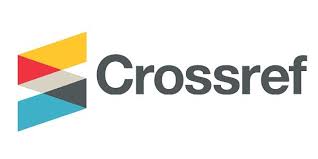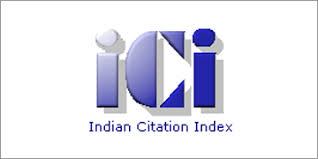IJCRR - 7(5), March, 2015
Pages: 01-06
Print Article
Download XML Download PDF
IMPROVING GROWTH INDICES AND PERFORMANCE IN WEANED PIGS UPTO GROWER STAGE WITH HERBAL ANTISTRESS SUPPLEMENT
Author: Praveen Kumar, K. Ravikanth, Adarsh, C. Abhinay
Category: Healthcare
Abstract:Objective: Studying the growth promoting and performance enhancing activity of Stresomix in weaned pigs up to grower stage.12 weaned pigs (Tamworth × Desi breed) of almost same age group (2-3month) and body weight were procured. All the 12 experimental piglets were randomly divided into 2 groups- group T1 and group T2 maintaining similar male: female ratio (n=6). Each group was allotted to different dietary treatments. Group T1 served as no treatment control group fed with basal ration only and group T2 piglets were supplemented with Stresomix (1kg/tone of feed) (M/S Ayurvet Limited, Baddi, India). Growth and haemato biochemical parameter were studied for 90 days on fortnightly basis. Daily body weight gain and linear body measurements were high in Stresomix supplemented group T2. Feed conversion efficiency was significantly improved in Stresomix supplemented
group T2. Haemato biochemical parameters were normal in Stresomix supplemented group T2. Stresomix improved the growth parameters and enhanced the feed efficiency in the piglets.
Keywords: Stress, Growth rate, Haemato biochemical parameters
Full Text:
NTRODUCTION
Immature immune system, hypothermia and immature gastrointestinal system at the time of birth are three important challenges for newborn piglets1 . Chilling – or hypothermia – is a major problem for newborn piglets. Perinatal mortality in modern pig production herds is relatively high (15 to 25%) compared with values for other production animal species2 . High variation in birth weight contributes to reduced survival, at least for litters of low mean birth weight, and to variable weaning weights3,4,5. Survival rate for the first seven days of life was 32% for piglets weighing less than 0.8 kg, compared to 97% for piglets weighing more than 2.0 kg, meaning that the piglets’ birth weight affects its chances for survival6 . At weaning, piglets are exposed to a range of stressors, including changes in diet composition, environment and bacterial challenges, contributing to digestive upsets and depressions in growth rate7,8,9,10. Number of piglets produced per sow per year is the most important trait affecting the financial results11, so it is of great importance to reduce stress induced mortality in piglets and increase the body weight of the piglets by using a natural antistressor. The current study was designed to study the effect of Stresomix, a natural antistress agent (M/S Ayurvet Limited, India) on growth and performance in piglets.
MATERIAL AND METHODS
Experimental design
12 weaned piglets (Tamworth × Desi breed) of almost same age group (2-3monthes) and body weight were procured for the experiment from instructional pig farm, R.V.C. Two weeks before starting of experiment piglets were maintained on balanced ration. 15 day before start of the experiment all the piglets were dewormed with Albendazole. All animals were vaccinated against FMD and swine fever. Thereafter, all the 12 experimental piglets were randomly divided into 2 groups- group T1 and group T2 maintaining similar male: female ratio (n=6). Each group was allotted to different dietary treatments. Group T1 served as no treatment control group fed with basal ration only and group T2 piglets were supplemented with Stresomix (1kg/tone of feed) along with basal ration. Basal ration formula given in table 1 and table 2.

The experiment was carried in weaned piglets upto grower stage. For 2 months experimental feeding was done followed by post treatment period of one month. Growth performance parameters viz. fortnightly body measurement, fortnightly body weight gain, Daily feed consumption and fortnightly feed conversion efficiency were recorded. Haematobiochemical parameters were also recorded during the study period on 0day, 45th day and on 90th day. Comparative economic of feeding was calculated on the basis of total feed consumption during experiment and total body weight gain in same period.
Statistical analysis
All the results were analyzed statistically by analysis of variance to determine the means and standard error as per the methods described by Snedecor and Cochran12.
RESULTS
Feed Consumption per pig per fortnight (0-90 days/ 6 fortnights) Total feed consumption per pig was 121.63 kg/pig (table 3) in Stresomix supplemented piglets of group T2 . The increase in feed consumption may be increased because of improvement in appetite and reduction in stress. Wide variety of herbal constituents improve appetite by stimulation of saliva secretion, enhance the synthesis of bile acids in the liver, helps in digestion and absorption of lipids and some also increase the activity of digestive enzymes of gastric mucosa13. Stresomix contain herbs like Withania somnifera, Ocimum sanctum which are reported to possess appetite stimulatory and antistress activity 14,15,16,17.

Body weight (g) daily change
The daily weight was significantly (P<0.05) higher in (498.89±2.68 g) Stresomix supplemented piglets of group T2 (table 4). Since the age of pigs at the fixed slaughter weight or days required to reach the fixed slaughter weight are more favourable from the statistical point of view than the growth rate, these traits were used for the estimation of breeding value of the growth potential18. More daily weight gain adds economic value.

Initially the cumulative body weight (Kg) of both groups was varied non significantly. But at the end of experiment (6th fortnight) the cumulative body weight was higher in Stresomix supplemented group T2 (58.08±0.03) varied significantly (P < 0.05) from the unsupplemented group T1 (55.35±0.11) (table 5). Increase in body weight in Stresomix supplemented group may be because of its ingredient herbs viz. Mangifera indica reported to possess growth promoting activity19. Mean body weight gain was also significantly (P < 0.05) maximum in Stresomix supplemented group T2 (7.48±0.04) (table 6).

Feed conversion ratio
FCR is a measure of an animal’s efficiency in converting feed mass into increases of the desired output. Feed Conversion Ratio (kg feed/kg gain) was calculated by dividing feed intake with body weight gain20. During the entire study period FCR values were significantly (P < 0.05) less in Stresomix supplemented group T2 (table 7). Mean FCR was also significantly (P < 0.05) less (table 8) in Stresomix supplemented group T2 (2.80) in comparison of untreated group T1 (2.99) signify better feed utilization and weight gain in Stresomix supplemented group T2 . The improvement in FCR in Stresomix supplemented group may be because of its herbs viz. Ocimum sanctum, Phyllanthus emblica and Withania somnifera reported to enhance feed utilization. 21, 22

Fortnightly change in linear body parameters
Body length changes, chest girth and height at withers were significantly (P<0.05) affected by Stresomix treatment. Initially the body length in both groups varied non significantly but at the end of the study i.e on 6th fortnight a (P<0.05) significant difference in body length was observed in Stresomix supplemented group T2 . An increase of 2.78 cm (table 9) was recorded in Stresomix supplemented group T2 on 6th fortnight in comparison to untreated group T1 . On 6th fortnight in Stresomix supplemented group T2 girth length (cm) and height (cm) at withers i.e. 84.33±0.17 and 55.67±0.11 respectively varied significantly (table 9) from untreated group T1 . The changes in linear body measurements are indicator of tissue growth and tend to increase as the animal grows 23,24,25. The results implies that supplementation of Stresomix is efficacious to improve tissue growth in the piglets.
Haemato-biochemical parameters
Haematological parameters are good indicators of the physiological status of farm animals26,27. Various environmental stresses like thermal stress affects the homeostasis include erythropoiesis in piglets28. At the start of the study haemoglobin count and packed cell volume in both groups varies non significantly. On 45th and 90th day the haemoglobin count and packed cell volume ie. 13.03±0.10 and 37.97±0.14 in Stresomix supplemented group T2 was significantly (P<0.05) high but in within the normal range in comparison of untreated control group (table 10). Oxidative stress also affects the haemato biochemical parameters29,30. The variation in blood biochemical parameter alanine transaminase (ALT) was significant (P<0.05) at 45th day but was in normal range in both the groups (table 10). On 90th day ALT values varied non significantly in both groups. On 90th day aspartate aminotransferase (AST) values in both group varied significantly (P<0.05) but were in normal range. No significant difference in blood glucose level was observed in both groups. On day 45th and 90th non significantly high plasma protein concentration was observed in Stresomix supplemented group T2 (6.57±0.03 and 6.92±0.04 respectively) in comparison of untreated control group T1 (6.35±0.04 and 6.55±0.08 respectively) (table 10) but values were in normal range. The results showed that Stresomix supplementation had improved the haemato biochemical parameters and maintained the levels in normal range.

Relative economics
A cost- benefit ratio (CBR) is an indicator of cost-benefit analysis, this attempt to summarize the overall value for money of a project or proposal. On the basis of parameters like feed consumption/pig (kg), total feed cost, cost of product administered, total body weight gain /group and additional profit over control (Rs.) the resulted CBR value for Stresomix supplementation came out to be 3.96: 1.
CONCLUSION
Stresomix, a herbal antistress agent had improved the body weight, feed consumption and linear body parameters in supplemented group T2 piglets. Haemoglobin count and packed cell volume was significantly high in Stresomix supplemented group T2 piglets. Overall Stresomix had improved the growth and performance indices with economic profitability in the weaned piglets upto grower stage.
ACKNOWLEDGEMENT
The authors are thankful to Ayurvet Limited, Baddi, India for providing necessary samples and guidance and Dept. of Veterinary Medicine, Ranchi Veterinary College, Kanke, Ranchi for providing the required facilities, guidance and support. Authors acknowledge the immense help received from the scholars whose articles are cited and included in references of this manuscript. The authors are also grateful to authors / editors / publishers of all those articles, journals and books from where the literature for this article has been reviewed and discussed.
References:
1. Sangild PT, Thymann T, Schmidt M, Stoll B, Burrin DG, Buddington RK. The preterm Pig as a Model in Pediatric Gastroenterology. J Anim Sci 2013; 91: 4713-29.
2. Rootwelt V, Reksen O, Farstad W, Framstad T. Postpartum deaths: Piglet, placental, and umbilical characteristics. J Anim Sci 2013; 91: 2647-56.
3. Milligan BN, Fraser D, Kramer DL. Within-litter birth weight variation in the domestic pig and its relation to preweaning survival, weight gain, and variation in weaning weights. Livest Prod Sci 2002; 76: 181-91.
4. Johnson RK, Nielsen MK, Casey DS. Reponses in ovulation rate, embryonal survival, and litter traits in swine to 14 generations of selection to increase litter size. J Anim Sci 1999; 77: 541-57.
5. Quiniou N, Dagorn J, Gaudre D. Variation of piglets birth weight and consequences on subsequent performance. Livest Prod Sci 2002; 78: 63-70.
6. Gardner IA, Hird DV, Franti CE.. Neonatal survival in swine: Effects of low birth weight and clinical disease. Am J Vet Res 1989; 50: 792-97.
7. Le Dividich J, Herpin P. Effects of climatic conditions on the performance, metabolism and health status of weaned piglets: a review. Livest Prod Sci 1994; 38: 79-90.
8. McCracken BA, Gaskins HR, Ruwe-Kaiser PJ, Klasing KC, Jewell DE. Diet-dependent and diet-independent metabolic responses underlie growth stasis of pigs at weaning. J Nutr 1995; 125: 2838-45.
9. McCracken BA, Spurlock ME, Roos MA, Zuckermann FA, Gaskins HR. Weaning anorexia may contribute to local inflammation in the piglet small intestine. J Nutr 1999; 129: 613-19.
10. Fraser D, Milligan BN, Pajor EA, Philips PA, Tayor AA, Weary DM. Progress in pigs science. In: Wiseman JM, Varley A, Chadwick JP, editors. Nottingham University Press; 1997.p. 121-40.
11. Palmø HA. Derivation of economic values for sow litter, oestrus and longevity traits, offspring production and carcass traits under Danish production circumstances using a profit equation model. PhD-thesis. The Royal Veterinary and Agricultural University, Copenhagen, Denmark, 1999.
12. Snedecor GW, Cochran WG. Statistical Methods. 8th ed. IOWA: IOWA State University Press; 1994. p. 1-503.
13. Srinivasan K. Spices as influencers of body metabolism: An overview of three decades of research. Food Res Int 2005; 38: 77-86
14. Bhattacharya SK, Muruganandam AV. Adaptogenic activity of Withania somnifera: an experimental study using a rat model of chronic stress. Pharmacol Biochem Behav 2003; 75(3): 547-55.
15. Kaur P, Mathur S, Sharma M, Tiwari M, Srivastava KK, Chandra R. A biologically active constituent of Withania somnifera (ashwagandha) with antistress activity. Indian J Clin Biochem 2001; 16(2): 195-98.
16. Godhwani S, Godhwani JL and Vyas DS. Ocimum sanctum. A preliminary study evaluating its immunoregulatory profile in albino rats. J Ethnopharmacol 1988; 24: 193-98.
17. Rastogi S. Ayurveda for comprehensive healthcare. Indian J Med Ethics 2009; 6(2): 101-02.
18. Houška L, Wolfová M, Nagy I, Csörnyei Z, Komlósi I. Economic values for traits of pigs in Hungary. Czech J Anim Sci 2010; 55 (4): 139-48.
19. Rukmini C, Vijayarahhavan M. Nutritional and Toxicological evaluation of mango kernal oil. J Enviromental Pathological Toxicol 1980; 4: 93-103.
20. Mwale M, Mupangwa JF, Mapiye C. Growth performance of guinea fowl keets fed graded levels of baobab seed cake diets. Int J Poult Sci 2008; 7: 429-32.
21. Reddy ET, Reddy PS, Satyanarayana PVV Reddy, Shakila S. Effect of herbal preparations (Phyllanthus emblica, Curcuma longa and Ocimum sanctum) on the performance of broilers. Tamilnadu J Veterinary & Animal Sciences 2012; 8(4): 209-14.
22. Kale VR, Wankhede SM, Karle SD. Effect of Dietary Supplementation of Ashwagandha (Withania somnifera) on Carcass Quality of Broiler Chicken. Indian J Anim Nutr 2014; 31(1): 81-5
23. Tegbe JS, Olurunju SAS. The Prediction of Liveweight of crossbred pigs from three body measurements. Nig J Anim Prod 1988; 15: 9-13.
24. Oke UK, Ibe SN, Ologbose FI, Amaefule KU. Effect of breed of sire on growth performance of exotic and crossbreed pigs in a humid tropical environment. J Anim Vet Adv 2006; 5: 744-48.
25. Sungirai M, Masaka L, Benhura TM. Validity of Weight Estimation Models in Pigs Reared under Different Management Conditions. Vet Med Int 2014; 1: 1-5.
26. Khan TA, Zafar F. Haematological Study in Response to Varying Doses of Estrogen in Broiler Chicken. Int J Poult Sci 2005; 4(10): 748-51.
27. Etim NN, Enyenihi GE , Williams ME, Udo MD, Offiong EEA. Haematological Parameters: Indicators of the Physiological Status of Farm Animals. British J Sci. 2013; 10(1): 33-45.
28. Adenkola AY, Ayo JO, Asala OO. Variations in Haematological Parameters and Erythrocyte Osmotic Fragility of Pigs during Hot-Dry and Harmattan Season in Northern Guinea Savanna Zone of Nigeria. Niger J Physiol Sci 2011; 26: 113-18.
29. Svobodová AR, Galandáková A, Sianská J, Doležal D, Ulrichová J, Vostálová J. Acute exposure to solar simulated ultraviolet radiation affects oxidative stress-related biomarkers in skin, liver and blood of hairless mice. Biol Pharm Bull 2011; 34(4): 471-9.
30. Sahin K, Sahin N, Onderci M, Yaraliogu S, Kucuk O. Protective role of supplemental vitamin E on lipid peroxidation, vitamins E, A and some mineral concentrations of broilers reared under heat stress. Vet Med Czech 2001; 46: 140-44.
|






 This work is licensed under a Creative Commons Attribution-NonCommercial 4.0 International License
This work is licensed under a Creative Commons Attribution-NonCommercial 4.0 International License